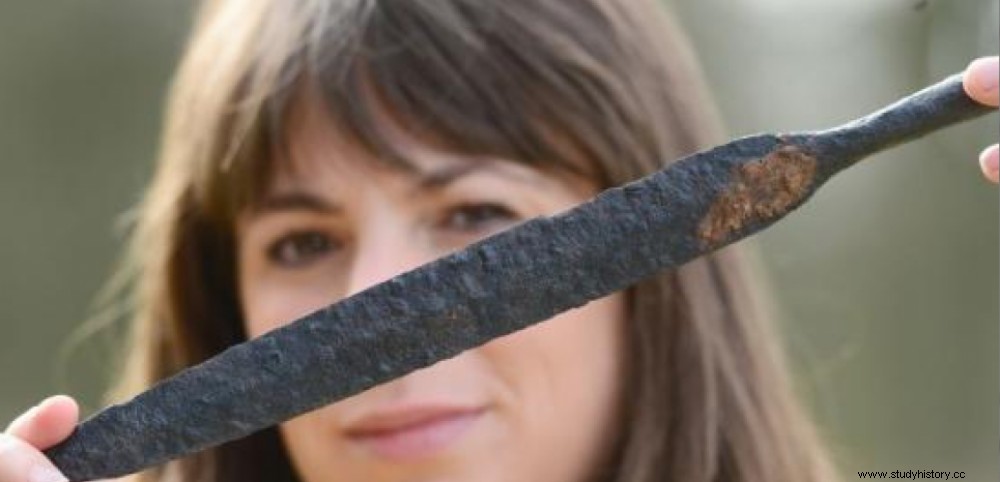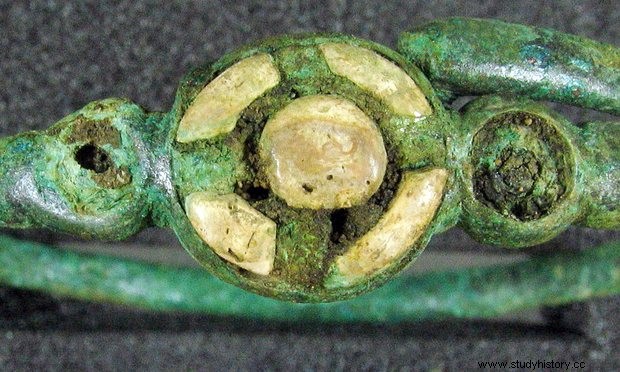 2nd Iron Age spearhead (425-25 BC) from warrior tomb of Pocklington Cemetery, Yorkshire, England.
2nd Iron Age spearhead (425-25 BC) from warrior tomb of Pocklington Cemetery, Yorkshire, England. NECROPOLIS. Buried for 2,500 years with spearheads and swords by their side, 150 particularly well-preserved skeletons have been unearthed in an important necropolis in Pocklington dating from the Second Iron Age (425 to 25 BCE), says La Tene. It would be the most important discovery ever made in England concerning this period. One of the 75 tombs even contained the only shield from this period ever found in Britain. Judging by the burial rites observed by archaeologists, these remains may have belonged to so-called "Arras culture" populations, a term coined in 1940 by the famous Australian archaeologist Gordon Childe (1892-1957) to baptize these groups with funerary customs undeniably close to those of the Celtic peoples of northern Gaul. The pottery and other glass and amber beads found also attest to this origin.

Bronze bracelet adorned with coral from the Pocklington necropolis. © MAP Archaeology
The discovery, made during property development, prompted the intervention of archaeologists from the Map Archaeological Practice, whose headquarters are in Malton (Yorkshire). They thus hope to complete the poorly known history of the ancient settlement of Great Britain, by making a point of determining, in particular, through genetic analysis, whether these remains belonged to populations who recently immigrated to the continent or who had already settled there. "These material remains are identical to those found in Champagne and in the Paris basin at the same time, like the chariot tombs and swords unearthed in 2003 at Roissy" , explains Laurent Olivier, curator of the Iron Ages department at the Museum of National Antiquities in Saint-Germain-en-Laye, near Paris.
Links established very early
The links between the Gallic populations of northern France and those of England are indeed attested very early. "In Caesar's texts, the relationship between certain peoples of the continent and the British Isles was clearly established. Traditions even report that between the 5 e and the 3 th century before our era, groups originating from Belgian Gaul, that is to say the region located north of the Marne, from present-day Champagne to the Rhine, had populated England" , specifies the archaeologist who recalls that this period of the Iron Age was very marked by great movements of populations. In antiquity, Ptolemy, in his book Geography presenting all the geographical knowledge of the Greco-Roman world, even gave the name of Parisii to the inhabitants who then populated Belgian Gaul and the Ardennes. The exhumation of this cemetery is expected to lead to the largest study of Iron Age groups ever conducted in Britain.
